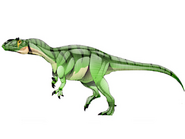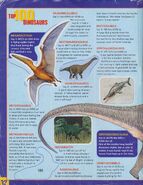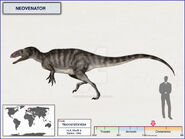(Editing a gallery) |
(Editing a gallery) |
||
| (One intermediate revision by one other user not shown) | |||
| Line 45: | Line 45: | ||
Neovenator by cisiopurple dcnlq3x-fullview.jpg |
Neovenator by cisiopurple dcnlq3x-fullview.jpg |
||
Screenshot 2021-01-21 at 8.27.45 AM.png |
Screenshot 2021-01-21 at 8.27.45 AM.png |
||
| + | D9y3s0t-efc50868-d53c-45e4-ad23-6851264d8a04.jpg|Neoventor with feathers |
||
| + | Neovenator hen and chick evosaur by otakusauridae dc5lcu9-fullview.jpg |
||
| + | Neovenator salerii by thewoodparable d7k6yub-fullview.jpg |
||
| + | The_neovenator_by_lukas1012_decsfn6-pre.jpg |
||
</gallery> |
</gallery> |
||
Revision as of 15:55, 23 January 2021
| Neovenator | ||||
|---|---|---|---|---|
 | ||||
| Name | Neovenator | |||
| Order | Saurischia | |||
| Suborder | Theropoda | |||
| Class | Reptilia | |||
| Name Translation | New Hunter | |||
| Period | Early Cretaceous | |||
| Location | Isle of Wight, UK | |||
| Diet | Meat | |||
| Size | 7.5 meters (24.5 feet) | |||
Neovenator ("new hunter") is a genus of allosauroid dinosaur. Since its discovery on the Isle of Wight, UK, it has become one of the best-known large carnivorous dinosaurs in Europe. Neovenator was at first considered possibly a new species of Megalosaurus. It measured approximately 7.5 meters in length, and was of a gracile build. It lived during the Barremian stage (Early Cretaceous).
Discovery and species
[1][2] The first bones of the type species were discovered in 1978, in the chalk cliffs of southwest Isle of Wight. It was much later (1996) that more bones from this specimen were found. Excavations undertaken by Dr. Steve Hutt and his team have so far revealed approximately 70% of the skeleton.
At the time that it was described, by Steve Hutt, Martill and Barker in 1996, it was considered the only known allosaurid in Europe. However, further studies suggested it had more in common with the advanced carcharodontosaurid group of allosaurs, and several studies including a detailed examination of the species by Benson, Carrano and Brusatte in 2010 showed that it is in fact closely related to the Carcharodontosauridae (in a group called Carcharodontosauria), but is actually closer to the Megaraptorans, together with them forming the family Neovenatoridae.[1]
















